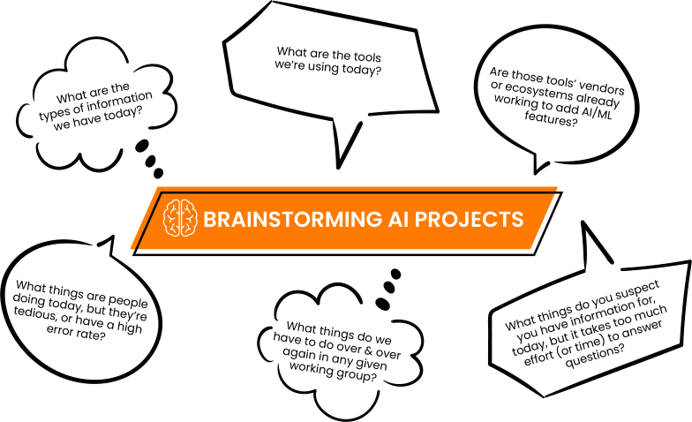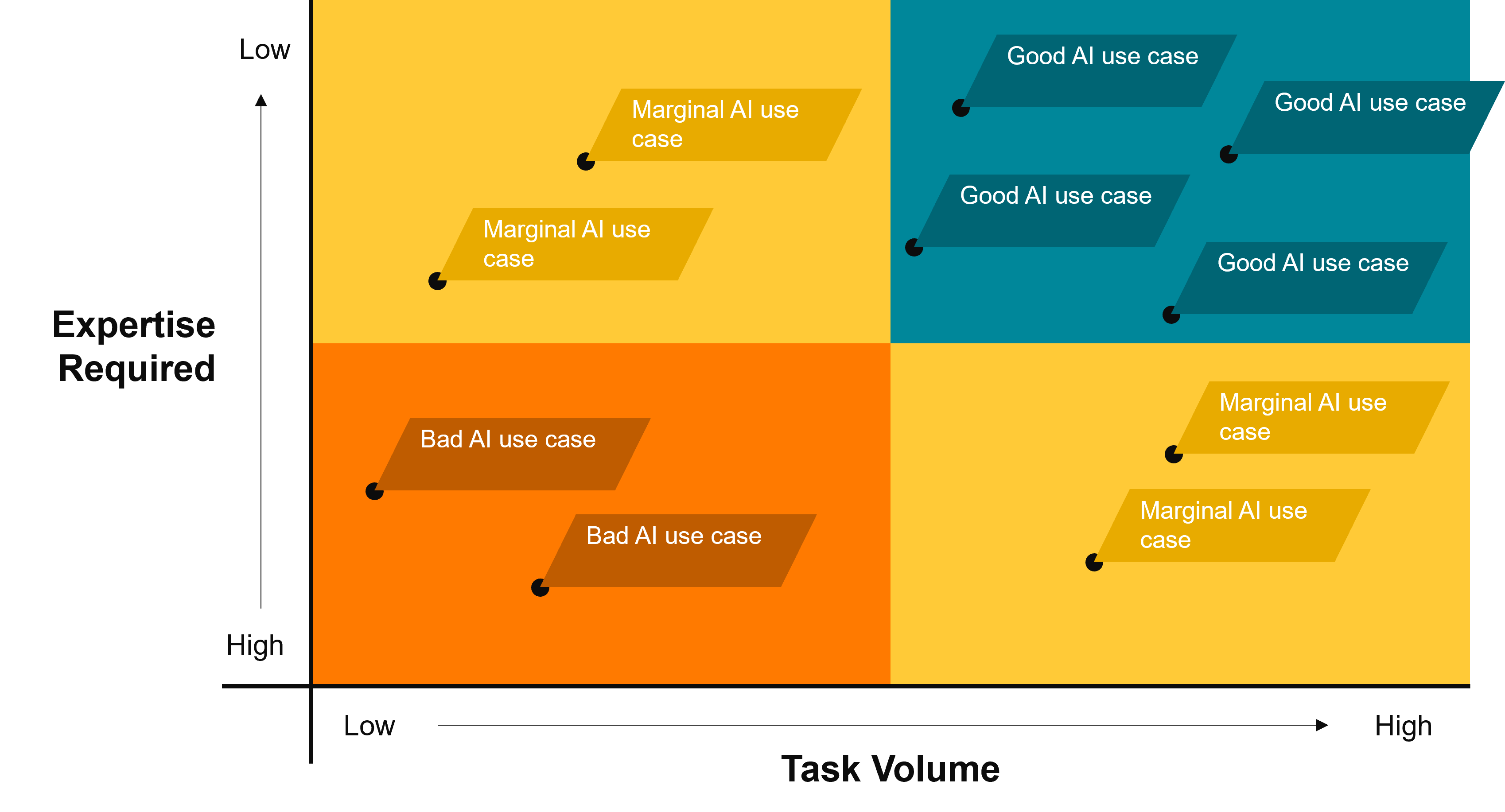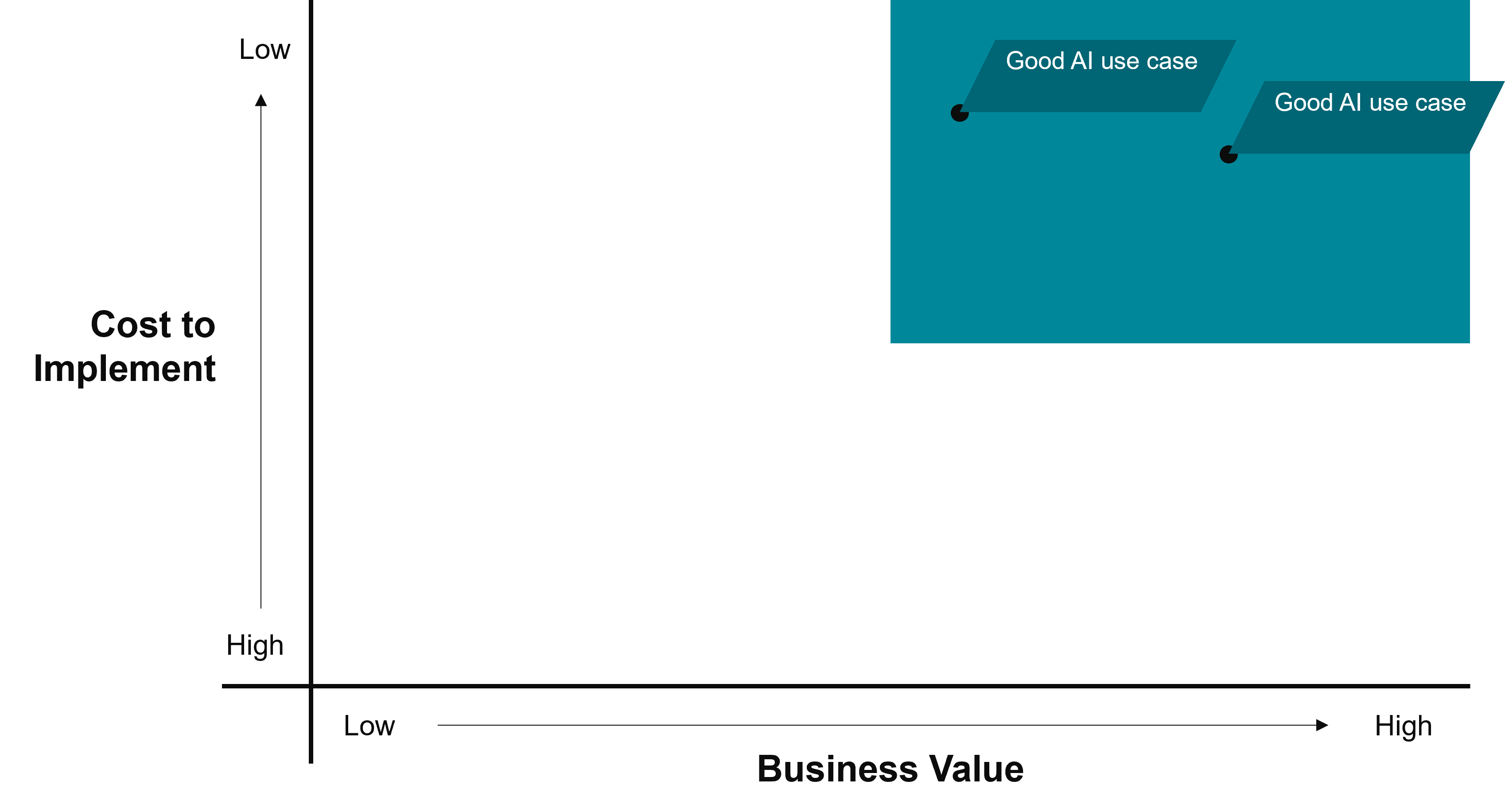Embarking on your own AI project is an endeavor that demands careful planning and strategic execution. So, where do you start on your AI journey?
Starting Your Own AI Project
Brainstorm Project Ideas:
The first step in launching your AI project is creative thinking. Gather your team for a brainstorming session and identify potential areas where AI can bring value. Explore things like:
- Pain points: What are your specific problems, challenges, or issues that cause frustration, inconvenience, or dissatisfaction within the organization?
- Repetitive tasks: What are some repetitive and mundane tasks that consume valuable human resources and time?
- Opportunities for automation: What are some tasks within your organization that your organization could benefit from being automated?
A diverse range of ideas lays the groundwork for a robust AI project pipeline.

Quantify Your Ideas:
Quantifying your ideas is a step that involves assessing probability, potential impact, and resource requirements. Evaluate the complexity of implementation and expected benefits for each idea. This process sets the stage for informed decision-making, allowing you to identify projects with the highest potential for success.

Filter Highest Value and Lowest Cost Ideas: Cost vs. Business Value
Filtering ideas involves striking the right balance between value and cost. Identify projects that offer substantial value with manageable implementation costs. Prioritize ideas aligning with your organizational goals, ensuring that your AI initiatives contribute significantly to your business objectives.

Prioritize Amongst Your Other Initiatives:
Consider your AI project in the broader context of your organizational initiatives. Evaluate its priority relative to other ongoing projects and align it with your strategic roadmap. Prioritization ensures effective resource allocation and seamless integration with your overall business strategy.
AI Initiatives: A Business Journey
Recognize that AI initiatives are as intense as any other business initiative of similar scale. Address key components:
- Process Leader: Appoint a leader to guide the AI initiative, ensuring alignment with organizational goals.
- Process Stakeholders/Users: Involve relevant stakeholders and users to gather diverse perspectives and requirements.
- Process Outcome Requirements/Expectations: Define clear outcome requirements and expectations for the AI project.
- Process Prerequisites: Identify prerequisites necessary for the project’s success, including data and infrastructure requirements.
- Process Training, Testing, Validation: Develop a robust plan for training, testing, and validating the AI model before implementation.
- Process Maintenance, Refinement: Establish processes for ongoing maintenance and refinement to adapt to evolving business needs.
Prepare for Your AI Project:
Before diving into the implementation phase, thorough preparation is essential. Focus on key aspects:
- Prepare and Organize Your Data: Ensure your data is well-prepared and organized, laying the foundation for accurate AI insights.
- Set Realistic Goals with Tangible Metrics: Define realistic goals for your AI project, accompanied by tangible success metrics to measure progress.
- Create a Comprehensive Management Plan: Develop a detailed plan for managing the AI project, covering all stages from inception to completion.
- Purposeful Vendor Selection: If relying on external vendors, carefully select partners aligned with your project’s goals and values.
Recognize the intensity of AI initiatives and prepare accordingly to navigate the complexities and reap the benefits of AI-driven innovation. Sautee
Watch the Full Webinar
Aldridge CIO, Chad Hiatt gives a candid update on our project to implement AI across our business. We want to share our AI journey, warts and all, because we believe that everyone who is interested in AI will benefit from the lessons that we have learned the hard way. Watch the full 2024 AI Update webinar to see the lessons learned from our AI journey.






